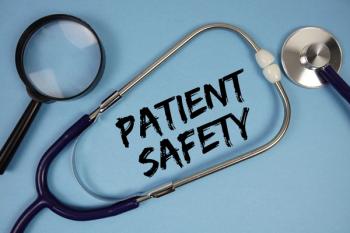
Medicaid carrier ups its fees and still cuts drug costs
A Philadelphia Medicaid carrier shifts pharmacy benefit management function in-house and works with a pharmacy network to cut drug costs. It achieves savings despite increasing fees to pharmacies
MANAGED CARE
Medicaid carrier ups its fees and still cuts drug costs
It was a perfect solution. "We saved tens of millions of dollars and increased the fees we pay pharmacies," said Michael Rashid, executive v.p. and COO of Keystone Mercy Health Plan in Philadelphia. The "tens of millions" was based on where pharmacy trends would have taken Keystone Mercy's costs if it had not made a change.
A medical assistance managed care organization, Keystone Mercy serves more than 750,000 members in six states: Pennsylvania, New Jersey, Kentucky, Texas, Missouri and South Carolina. It operates as a 50-50 joint partnership between Mercy Health System and Independence Blue Cross. When the costs of prescription drugs rose some 87% in two years, Keystone Mercy was left with little or no wiggle room. To deal with the situation, it brought its pharmacy benefit management in housein-sourcing to provide better management of its Medicaid dollars.
"Commercial managed care plans have more control, with two- or three-tier co-pays that discourage people from high-cost drugs," said Rashid. "We can't control costs that way because Medicaid plans have a lot more restrictions. We had to get closer to the situation and take more control."
To get a handle on drug costs, Keystone Mercy assessed its situation: more elderly members with acute medical problems, few incentives to contain costs and manage drug utilization, expensive new drugs that provided marginal incremental benefits, and increasing off-label use of Food & Drug Administration-approved products, among others. A multidisciplinary task force identified its goals as reducing pharmacy costs and improving satisfaction of members and providers. After examining its options, it chose to discontinue its association with its PBM and to bring that function in-house.
Keystone Mercy created a network of pharmacies willing to work with it and provided advanced technology, such as on-line prescribing, to help pharmacists and physicians implement the program. In addition, it examined unit-cost management, maximizing the use of generic products, and negotiating directly with the pharmaceutical industry for discounted prices. Then it went out on a limb and increased reimbursements to pharmacies.
"Prior to in-sourcing, we were one of the worst payers in this market because we're Medicaid and we have a fixed budget," said Rashid. "We recognized the important role that pharmacists play in bridging the gap between insurer and physician, and in helping to educate members and facilitating better health care. We realized that if we were going to ask more of the pharmacists in terms of helping us manage the care for the member, we were going to have to increase the reimbursement. They have responded by helping us much, much more than before."
Keystone Mercy depends on pharmacists to properly manage patients' use of medication, based on an established formulary, clinical guidelines, and protocols. It provides educational programs in which pharmacists discuss formulary issues and protocols and a weekly newsletter that details plans for the coming month. According to Mesfin Tegenu, v.p., pharmacy services at Keystone Mercy, this emphasis on constant communication met a positive reception with the pharmacists.
As soon as the program was in place, Keystone Mercy established a pharmacy advisory panel composed of seven actively participating pharmacists: three from independent pharmacies and four from major chainsCVS, Rite Aid, and Acme. Their role is to provide feedback and create clinical activities that will utilize pharmacists' education in managing the whole program. "Now that we are one step ahead, the pharmacy advisory panel is planning a program of patient care management in which pharmacists will manage patients with asthma and diabetes," said Tegenu. "One of our core philosophies in bringing the pharmacy program in house is to make use of this wealth of knowledge that the pharmacists have."
After one year, Keystone Mercy has achieved its primary goals, according to Rashid. It has increased its pharmacy network from 600 to 1,200, increased provider and member satisfaction levels, and increased recovery of fraudulent/misbilled claims. "I'm not proposing that this is the solution for everyone, but this program can be replicated elsewhere," he said. Keystone Mercy's next objective is to expand its in-sourcing program to all six states.
If proof of the pudding is in the eating, Keystone Mercy's recipe seems to be working for at least one pharmacist. Dean Siegel of Regal Pharmacy in northeast Philadelphia gives the plan a thumbs-up. He feels that Keystone Mercy is a tightly run operation that is in tune to the pharmacists' needs and the patients' needs as well.
Ann Saul
The author is a writer in the Philadelphia area.
Ann Saul. Medicaid carrier ups its fees and still cuts drug costs.
Drug Topics
2001;5:83.
Newsletter
Pharmacy practice is always changing. Stay ahead of the curve with the Drug Topics newsletter and get the latest drug information, industry trends, and patient care tips.













































































































































